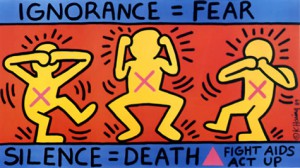Public Health
The difference in price between a patented medicine and a generic drug can be a nuisance in a wealthy country but a matter of life and death in the Third World. The antiretroviral treatment for HIV-AIDS has been successful in stemming the tide of the disease for those who can afford the drugs. However in the Third World, where such drugs are expensive when available, AIDS continues to ravage populations. It is now the leading cause of death in sub-Saharan Africa.
In Botswana and Swaziland, more than one-third of the population is infected. Whatever minimal progress to reduce poverty among the heavily indebted nations has been virtually negated by this health crisis. Negotiations with drug companies in the global north to lower their prices have resulted in only marginal reductions.
Responding to this enormous public health crisis, several countries including Brazil announced that they would defy patent law and start producing their own generic antiretroviral drugs. Brazil freely distributes the AIDS “cocktail” of antiretroviral drugs, but can support such a program only with cheaper, generic drugs produced locally or imported from China and other countries. As a result of Brazil’s hardball negotiating and its commitment to a socially responsible government health program, the World Trade Organization (WTO) brokered an agreement in 2003 that allowed generic drug manufacturers to export medicine needed to treat AIDS, tuberculosis, malaria, and other diseases to countries that can’t afford patent medicine. Critics argue, however, that the WTO ruling just puts a lot of red tape between the drug manufacturer and the needy patient.
In July 2005, Brazil renewed its struggle by threatening to issue a compulsory license to a domestic company to produce a generic version of an expensive antiretroviral drug. The WTO allows such compulsory licensing in the case of a public health emergency, as in the case of the United States producing cheaper drugs in the wake of the 2001 anthrax scare. Although Brazil backed down when the producer of the patented drug reduced the price, the struggle between pharmaceutical companies and cash-strapped public health ministries will only intensify as the AIDS crisis mounts.
The United Nations has called health a “global public good.” Infectious disease, like environmental pollution, shows no regard to national boundaries. Adequate health care, meanwhile, contributes not only to the local commonwealth but, because of the increase in migration, foreign capital investment, and information flow, the global commonwealth as well.
At the same time, public expenditure on health care is not meeting the needs of vulnerable populations, either in emergency areas (AIDS, tuberculosis) or simply in providing basic care for those without private means. Although global health care expenditures have risen from 3 percent of global product in 1948 to 8 percent in 1998, according to the World Health Organization, the level of primary care remains woefully inadequate, particularly for the poorest of the poor. The spread of privatization only exacerbates this trend for it raises the quality of health care for those who can pay and ignores the wellbeing of those who can’t. Drug-resistant TB, rising antibiotic immunity, and the appearance of new infectious diseases such as SARS are straining health-care budgets around the world.
That the richest country in the world, the United States, does not provide health care insurance to over 15 percent of its population is a powerful indication of both the inadequacy and the inequality of public health care expenditures. Although Americans spend over $1.4 trillion on health care, very little of this money goes to public health, which translates not into a public health system but what journalist Laurie Garrett has called “a hodgepodge of programs, bureaucracies, and failings.” In the United States, as in the rest of the world, the rich have gotten better and better health care, while the poor are lucky if they get any care at all. A more equitable distribution of resources could go a long way toward rectifying the situation. For under $20 billion a year, according to UN calculations, the basic requirements for a sustainable health policy can be achieved. For that price, all children can receive basic education ($6 billion) and free school lunches ($3 billion) and their families could receive clean water and sanitation ($9 billion). For another $5 to $10 billion, health infrastructures in the poorest countries could be rebuilt. Thirty billion dollars is approximately one-fifteenth of what the United States spends a year on its military.
Are drug companies part of the problem or part of the solution? Should countries like Brazil try to bargain with drug companies to lower the prices of their critical drugs or simply defy the WTO and manufacture their own generic substitutes? By putting money into public health infrastructure, are we effectively combating poverty or only treating the symptoms? How do we determine the upper and lower limits of public health expenditures? Do alternative medical approaches provide any guidance for the provision of public health care? Are advances in stem cell research necessary steps to take for curing debilitating diseases, windfalls for biotech companies, or dangerous transgressions of human limits?
On a trip to Provisions, you can read Erick Chivian’s exploration of the connections between public health and the environment in the book Critical Care, catch up on the latest in the battle against AIDS in the magazine POZ, log on to Everybody In, Nobody Out to find out where we are in the fight for universal health care, check out the archive of photos from the history of U.S. public health, and see Erin Brockovich battle the big boys on behalf of community health.


